LiveWire Omnipeek
Engine Configuration View
The Authentication Group Secret can be modified in the “Security” section of the Engine Configuration View:
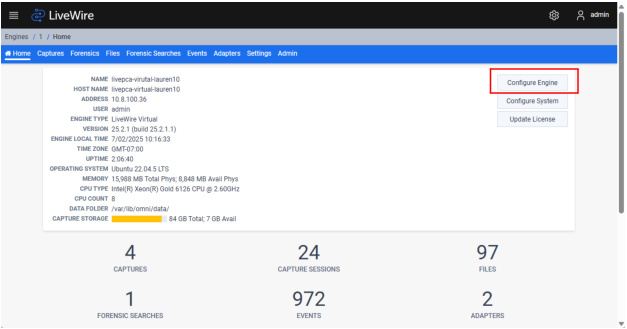
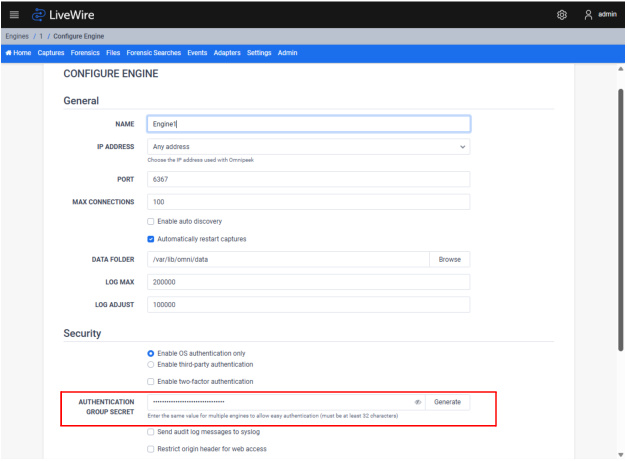
Clicking the “Generate” button will generate a random 32 character group authentication secret.
The Authentication Group Secret must be either empty or between 32 characters and 64 characters in length.
Engines View
The user may add engines to the Engines List using the Engines View.

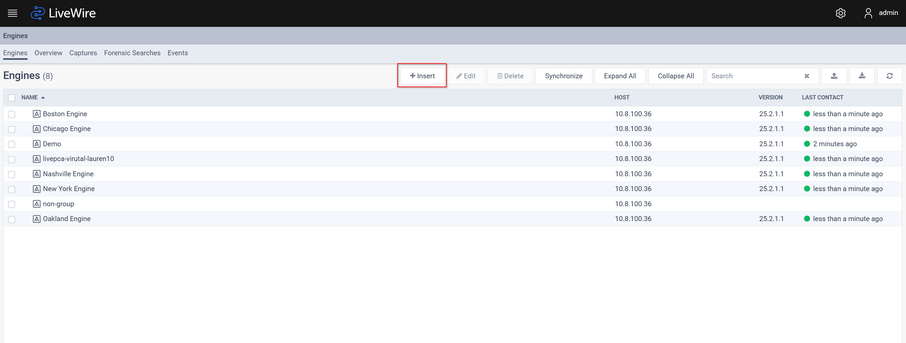
Beginning with LiveWire 25.2.0, the engines will be displayed in the Engines View according to the following rules:
◦ Non-group engines created by the user will be visible to only that user.
◦ Group engines will be visible to all users assuming the user has the ACL permission to Configure Group Engines
Clicking on the “Insert” button will popup a dialog allowing the user to insert a new engine.
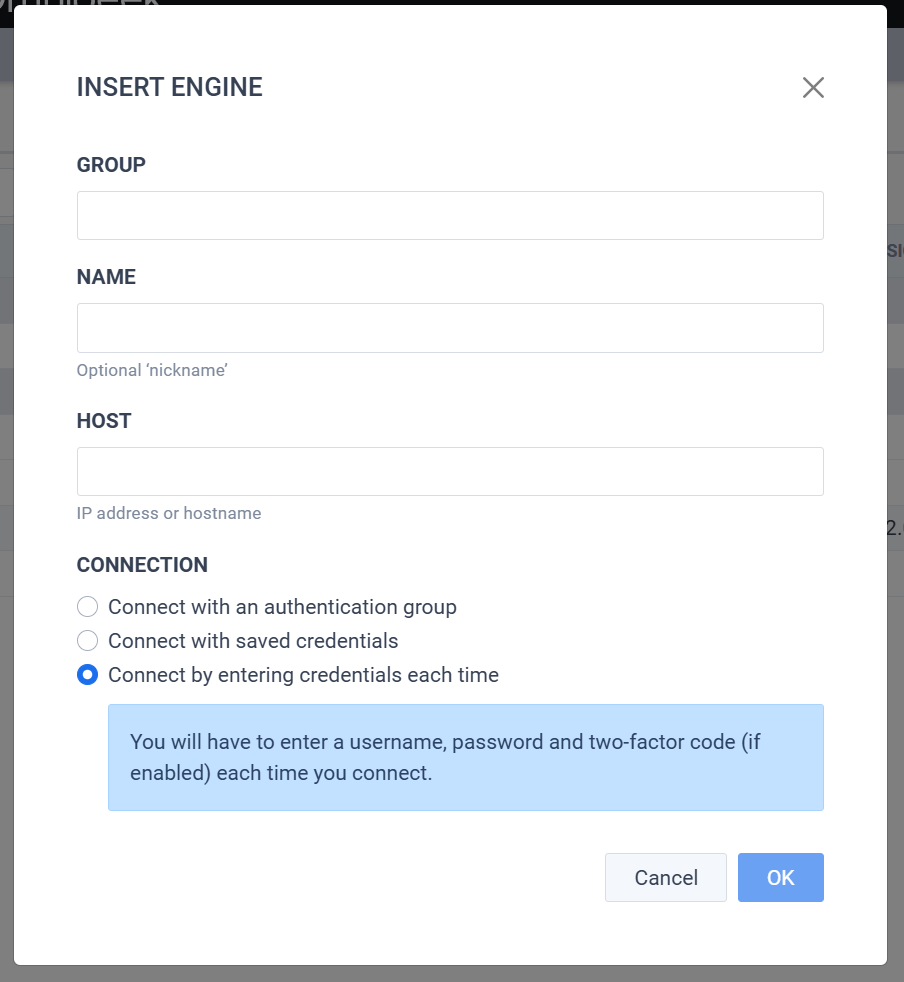
For a LiveWire that has support for the Authentication Group Secret (v24.3.0+), the user will have the option in the “Connection” section for “Connect with an authentication group”. If the LiveWire does not have this support, this option will be hidden and the user will have to select one of the other 2 options. If the user selects the “Connect with an authentication group” option in the “Connection” section, this newly inserted engine will be a group engine.
If the host engine has support for the Authentication Group Secret (v24.3.0+) and the Authentication Group Secret is not empty, then the default Connection for new engines will be “Connect with an authentication group”.
Also, the user will now be restricted to either enter no Name or a unique Name.
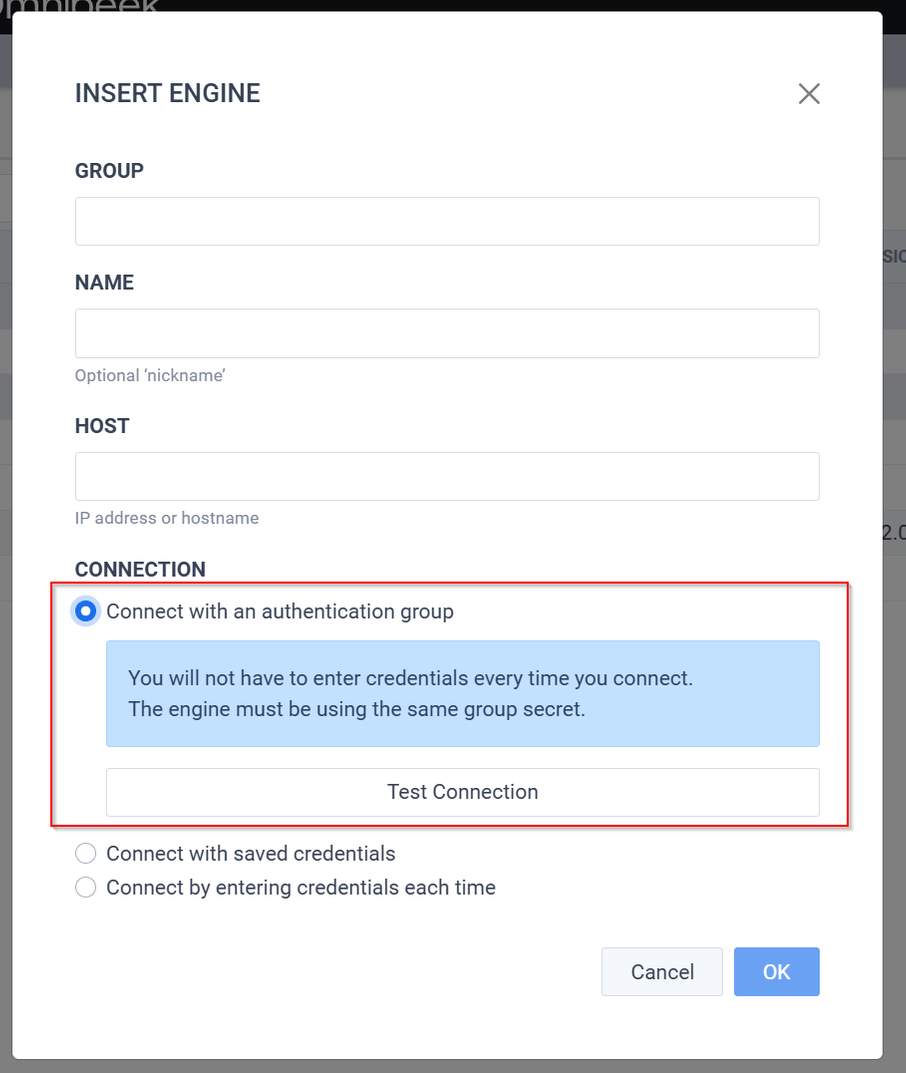
For a LiveWire that has support for group engines (v25.2.0+), the “Test Connection” button will be displayed in the “Connection” section when the Connection is “Connect with an authentication group”.
Clicking the “Test Connection” button will cause the engine to try and communicate with the LiveWire at the specified host using the Authentication Group Secret. A success or failure message will be displayed to let the user know the test result.

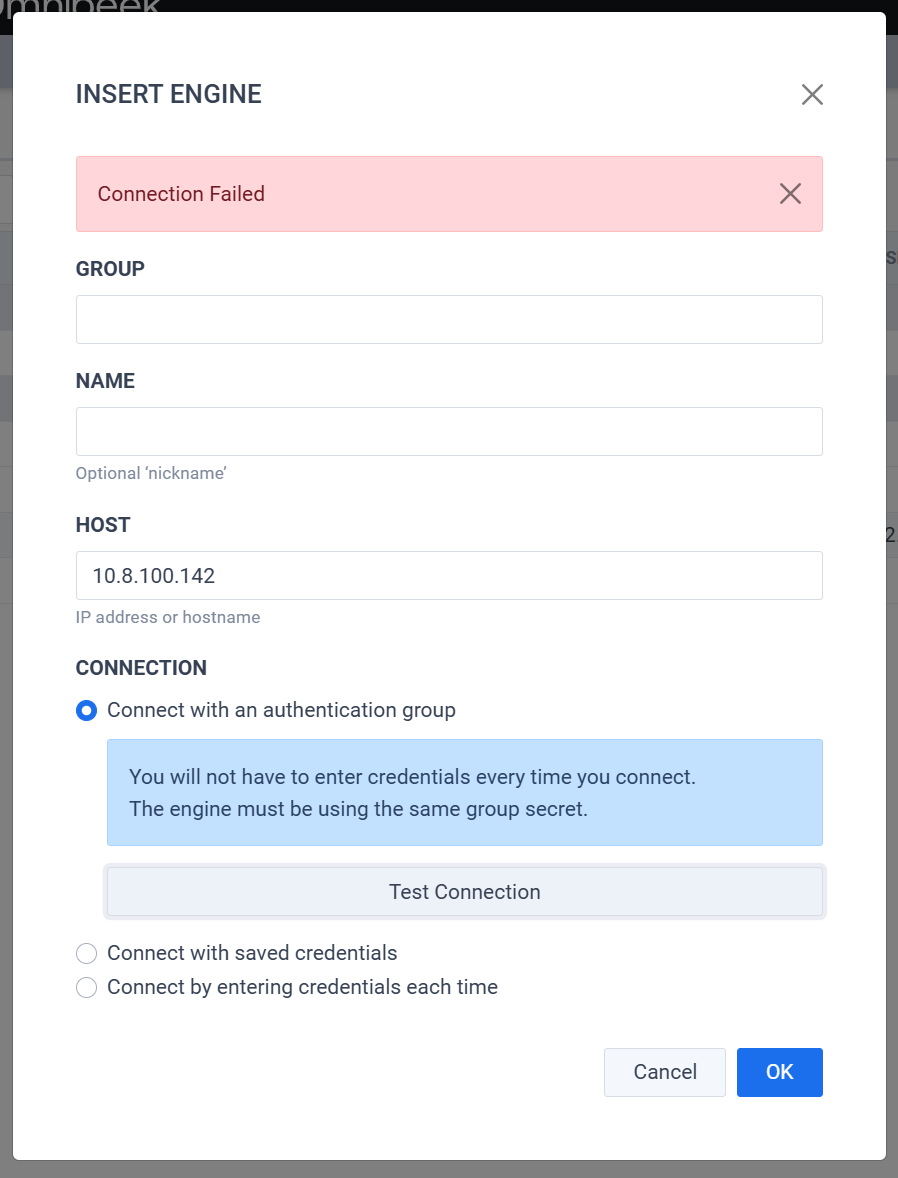
For a LiveWire that has support for group engines (v25.2.0+), inserting a group engine in the Engines List for this LiveWire will also automatically add a group engine for this LiveWire in the group engine’s Engines List, assuming the group engine also has support for group engines (v25.2.0+). This automatic insert will occur on the group engine when the first group engine heartbeat is sent (see below).
LiveWire (Group Engine Heartbeat)
For a LiveWire that has support for group engines (v25.2.0+), a hearbeat message will be sent between all group engines at a specified interval.
Every time a heartbeat is sent, information about the group engines will be exchanged. This will effectively update the “Last Contact” time and “Version” for both the group engine on this LiveWire and this LiveWire on the group engine.
NOTE: The group engine must also have support for group engines (v25.2.0+) for this LiveWire to get a response.
NOTE: For a group engine pair, the group engine heartbeat will only be sent from 1 LiveWire. In other words, both engines do not send a group engine heartbeat. Only 1 side will send a heartbeat so as to reduce duplicate communication. If the user added the group engine through this LiveWire’s Engines View, then the first group engine heartbeat will come from this LiveWire, but all other group engine heartbeats will come from the group engine that was inserted. If the user added the group engine through the Omnipeek Windows installer, then that Omnipeek Windows engine will send all group engine heartbeats.
The status of group engine heartbeats can be seen in /var/log/omnitrace.log (additional logging can be seen by changing the log level to MEDIUM):

When the user deletes a group engine from either side, the corresponding group engine on the other side will be deleted during the next heartbeat.